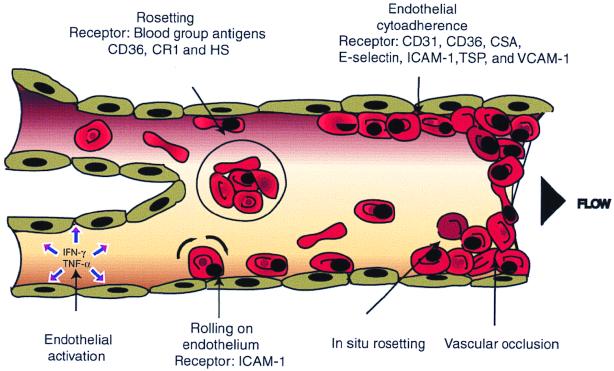FIG. 1.
Cytoadherence and rosetting in postcapillary vasculature. P. falciparum-infected RBCs bind to the postcapillary endothelial lines and to noninfected RBCs. Both phenomena are thought to contribute to the occlusion of blood flow and consequent severe disease. Parasite antigens could stimulate IFN-γ and TNF-α release, which upregulates receptor expression (such as ICAM-1) and redistribution (such as CD31) on the endothelium. ICAM-1 is suggested to mediate pRBC rolling on endothelium, while CD36, CD31, and other receptors are responsible for more stable binding. Sequestration could be augmented by the ability of spontaneous rosetting (in situ rosetting) and cytoadherence of the parasite.

